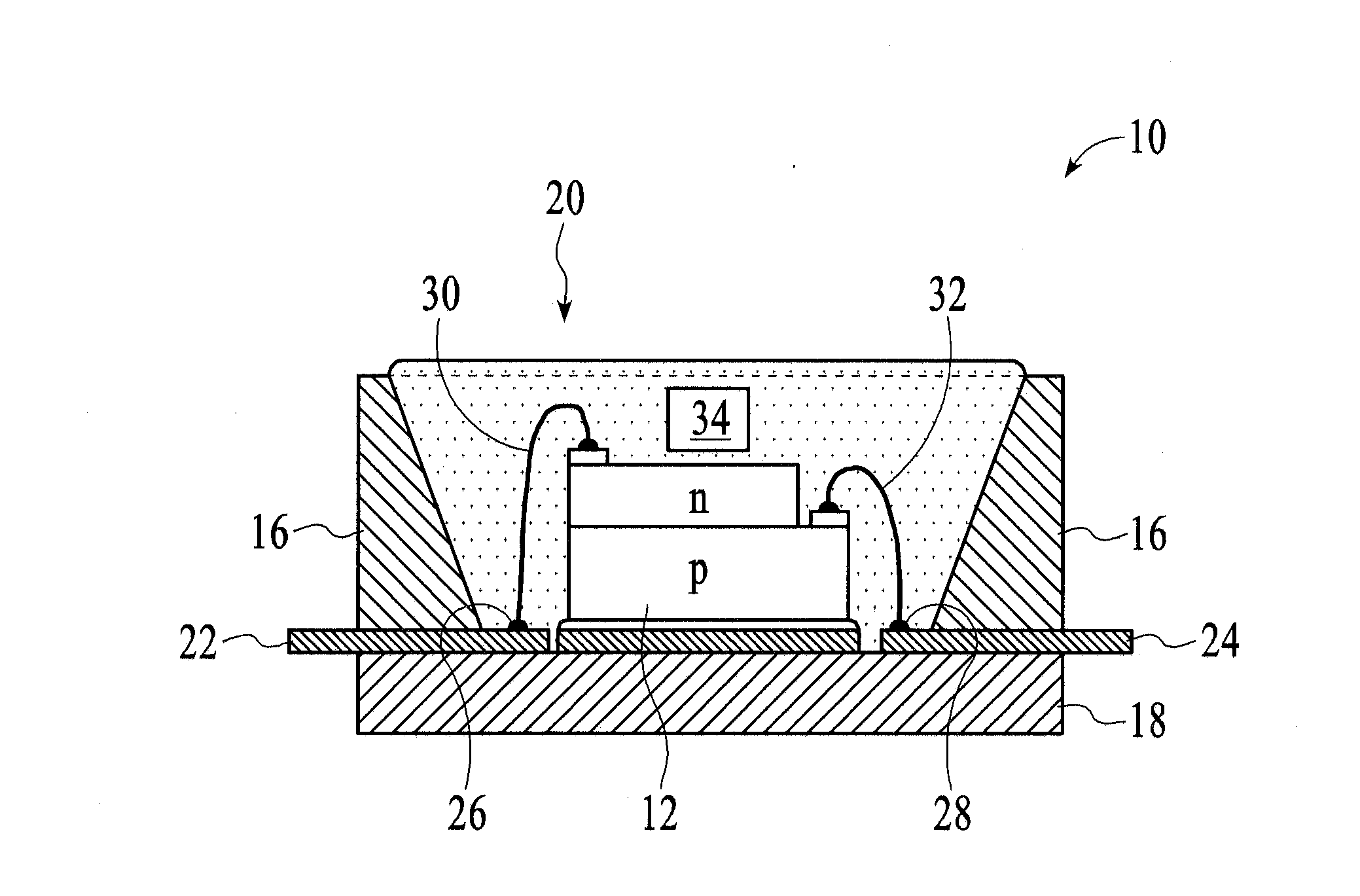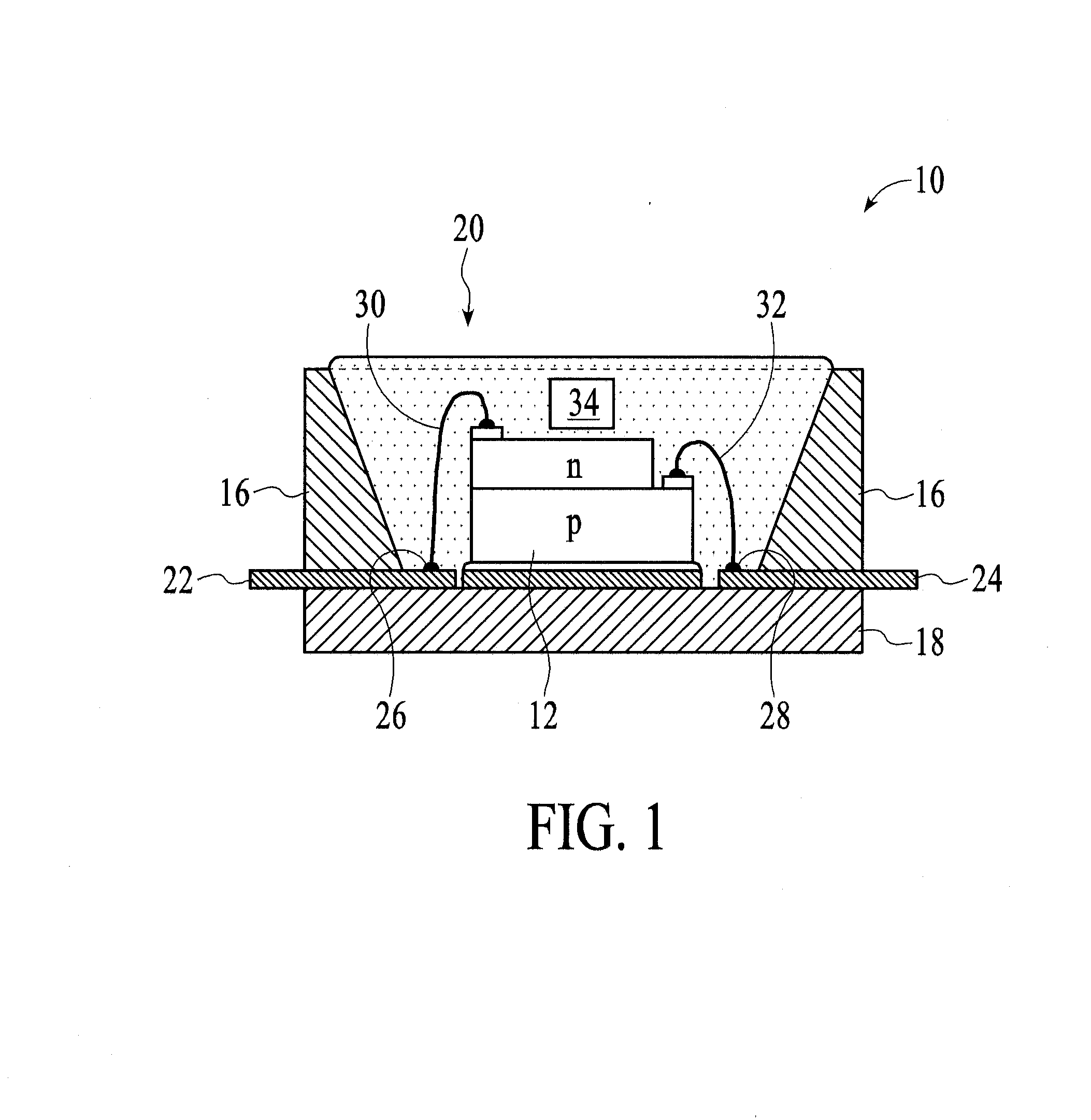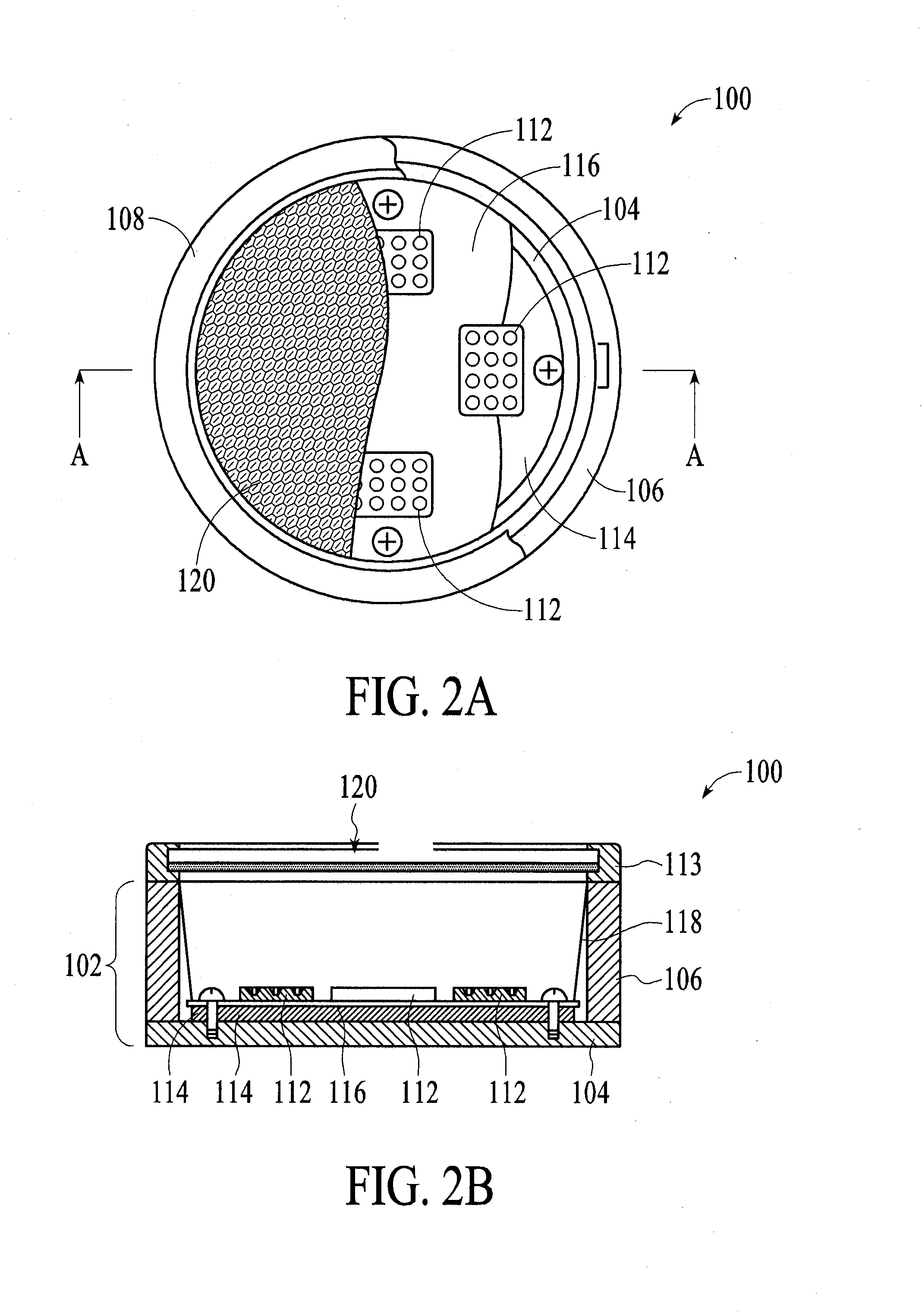Coatings for Photoluminescent Materials
a technology of photoluminescent materials and coatings, which is applied in the direction of discharge tube luminescnet screens, lighting and heating apparatus, natural mineral layered products, etc., can solve the problems of affecting the performance of a phosphor at the time of production or during use, affecting the reliability of a phosphor over time, etc., and achieves the effect of increasing the performance and/or reliability of the phosphor
- Summary
- Abstract
- Description
- Claims
- Application Information
AI Technical Summary
Benefits of technology
Problems solved by technology
Method used
Image
Examples
example 1
Coating a Silicate Yellow Phosphor with a Coating Including TiO2 and SiO2
[0155]To a glass reactor with heating mantle and stirring set up under an evacuation hood, isopropyl alcohol (IPA, 750 mL) was added. Then, a silicate yellow phosphor (Yellow 1-(Sr2−y−zBaxMgyEuz)SiO4Cl0.12) (50 g) was added with stirring to form a suspension. To this suspension, titanium n-butoxide (3.40 mL) was added by syringe. After this addition, the suspension was stirred for 0.5 hours at room temperature. The mixture of de-ionic water (water purified by a resin ion exchange system for removal of metal ions) and isopropyl alcohol (7.5 mL: 15 mL) was then added dropwise to the suspension. After this addition, the mixture of TEOS and isopropyl alcohol (2.26 g: 5 mL) was added dropwise to the suspension. The resultant suspension was heated to 40° C. and kept at temperature for 0.5 hours. It was cooled to room temperature and stirred for a further 20 hours at room temperature. The suspension was heated to 60°...
example 2
Comparing the Performances of Uncoated and Coated Silicate Yellow Phosphors, the Coatings Including TiO2 and SiO2 Alone and in Combination
[0156]Performance was compared with regard to relative photoluminescence and brightness. Photoluminescence was measured between uncoated and coated yellow phosphors created using the process of Example 1. Powdered phosphor was put into a shallow dish and tampered down to make a flat surface. The phosphor was then excited by an external light source of a blue light-emitting diode (LED). An emission spectrum from the uncoated and coated yellow phosphor materials was measured using a spectrometer.
[0157]FIGS. 5A and 5B show the photoluminescence emission spectrum of two different yellow phosphors—Yellow 1 and Yellow 2—comparing the uncoated and coated yellow phosphors, according to some embodiments. FIGS. 5A and 5B show that both TiO2 and SiO2 coatings cause a loss of photoluminescence from each phosphor after applying either the TiO2 or SiO2 as a coa...
example 3
Testing for Water Uptake at Room Temperature
[0161]A water absorption test was performed to determine the ability of the uncoated and coated phosphors to take-up water at room temperature. Each of the samples was dried in an oven at 250° C. for 2 hours and then allowed to cool in a dry dessicator to room temperature. The dried samples were then weighed to an accuracy of 0.0001 mg. The samples were then put into an environment of 100% humidity using a dessicator having an ammonium chloride solution for 3 days (72 hours). The samples were then re-weighed for weight gain and the weight increase was compared between the uncoated and coated samples.
[0162]Table 3 shows the results of the water absorption test at room temperature. It can be seen that, at room temperature, the TiO2 coating absorbed much more moisture than the SiO2 coated phosphor or the combination coating having the TiO2 primer layer and SiO2 sealant layer. The SiO2 coating and the combination coating blocked absorption of ...
PUM
| Property | Measurement | Unit |
|---|---|---|
| Thickness | aaaaa | aaaaa |
| Photoluminescence | aaaaa | aaaaa |
Abstract
Description
Claims
Application Information
 Login to View More
Login to View More - R&D
- Intellectual Property
- Life Sciences
- Materials
- Tech Scout
- Unparalleled Data Quality
- Higher Quality Content
- 60% Fewer Hallucinations
Browse by: Latest US Patents, China's latest patents, Technical Efficacy Thesaurus, Application Domain, Technology Topic, Popular Technical Reports.
© 2025 PatSnap. All rights reserved.Legal|Privacy policy|Modern Slavery Act Transparency Statement|Sitemap|About US| Contact US: help@patsnap.com



